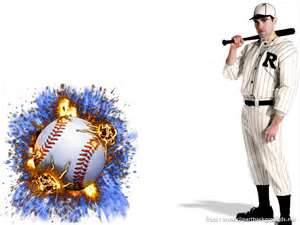Spring Season Divisions and Determining Ages

Tee Ball: 4-6 years
This is for boys and girls 4-6 years old who want to learn the fundamentals of hitting and fielding. The primary goals of Tee Ball are to instruct youngsters in the fundamentals of baseball and softball and allow them to experience the value of teamwork but most of all, to have fun.
Minor Machine Pitch (ages 7-8)
This division is designed to expand on the fundamental skills and to prepare players for Player Pitch in Majors. the basic rules of baseball will be taught along with the fundamental skills involved in hitting, throwing and catching a baseball. Many skill levels will be represented and no prior experience is required. League Age 9 may be considered with no prior baseball experience. This division will strive to provide balanced playing time for all players and a continuous batting order will be used.
Majors (ages 9-12)
This is the division that ultimately competes to play in the Little League World Series. This division is player pitch, with rules that more closely resemble baseball as it is commonly played at higher levels. All League age 9, 10 year old must try out for Majors. Minimum playing time rules exist for this division, but line-ups will begin to reflect the Managers decisions as to skill levels of the players, a continuous batting order will be used.
Intermediate or 50/70
This division is player pitch, with rules that more closely resemble baseball as it is commonly played at higher levels (i.e. Lead-offs, stealing at any time, Bock rule). All League age 12 and League Age 13 year old must try out for 50/70. League Age 11 players may also try out for 50/70 with at least one year prior experience in Majors but it is possible not all will be selected. Minimum playing time rules exist for this division, but line-ups will reflect the Managers decisions as to skill levels of the players, and a a continuous batting order will be used.
Juniors
13 and 14 year
Challenger
This division offers disabled children the opportunity to play youth baseball on a real team, to learn the game and to create lasting friendships. No score is kept. Every player is a winner. Everyone has a turn at bat, advances through the bases, and takes a turn in the outfield. The wide range of abilities of Challenger participants will necessitate variations not only in the rules, but also in the philosophy of conventional baseball. One of the unique benefits of the Challenger Divisions is the use of the “buddy” system, whereby handicapped players will be assisted by non-handicapped players, e.g., helping handicapped players in rounding bases. This buddy system has been a proven benefit in programs across the country in establishing good relationships between disabled and non-disabled players. Through the “buddies” program, Challenger League players are paired with other little league ball players and volunteers from the community. In this way, the community is learning about inclusiveness, increasing their knowledge about children with disabilities and fostering community partnerships. A key to a successful Challenger Division is the careful selection of managers and coaches as well as sponsors. Qualified adult leadership must reflect positive and constructive direction, tempered with patience and understanding. The teams can be made up of player’s equal in ability, rather than emphasis on age.
To Determine Ages